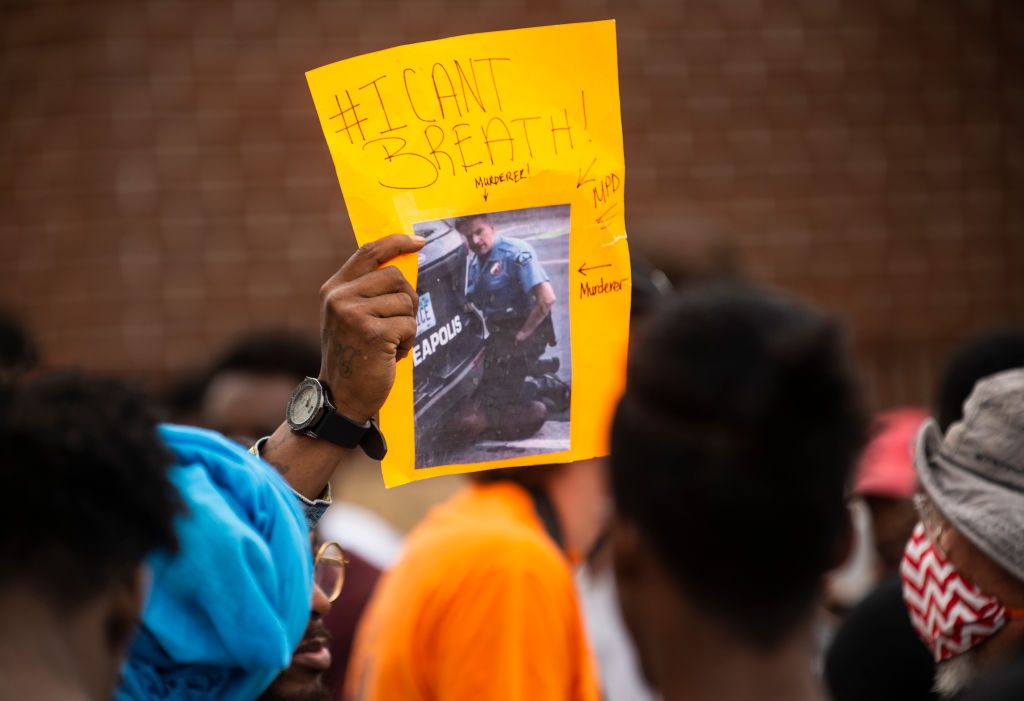Maybe We Should Stop Giving the Minneapolis Police Military Equipment

The death of George Floyd in Minneapolis on Monday demonstrates how easy it is to end a life. Floyd wasn’t shot with a firearm, as was Philando Castile during a traffic stop four years ago. He wasn’t even tossed in the back of a police van, as was Freddie Gray before that. The weapon was a simple knee to the neck. The video of his arrest is chilling precisely because it’s casual, quotidian almost, just another day on the job for his badge-bearing assailants, a stark contrast to the victim gasping on the ground.
Floyd’s killing has touched off yet another of that most depressing of sequences: a video emerges showing a black man being brutalized by police; his community protests peacefully; those demonstrations are hijacked by rioters and professional anarchists; Molotov cocktails fly; flames erupt. An act of harm by the authorities is followed by a city-wide act of self-harm.
Afterwards the question is always: now what do we do? And certainly there are plenty of good policy reforms that can help restore trust between law enforcement and local communities. Donald Trump in 2018 signed into law the First Step Act, which ordered changes to the prison and sentencing systems. In the meantime, though, how about we start with some low-hanging fruit? How about we stop arming police departments with military-grade equipment?
Philip V. McHarris writes at the Washington Post:
Such protests have become common in a country where more than 1,000 people annually are killed by police, with black people three times as likely as whites to be the victims. Also common is what happened soon after demonstrators gathered to protest Floyd’s death: Police in riot gear shot tear gas canisters into the crowds and fired stun grenades and “nonlethal projectiles” at demonstrators, injuring many. It was stunningly easy to point to the same department’s gentle treatment weeks ago against white anti-lockdown protesters while those protesting against police violence were met with militarized violence.
But this too should not surprise us. Police departments have come to resemble military units, contributing to deadly violence disproportionately against black Americans. While many policies related to policing and mass incarceration happen at the local level, the militarization of police has been promulgated by federal policies.
At issue is the Pentagon’s so-called 1033 program, which allows police to obtain military surplus equipment from the Defense Department. Among the gear that’s been transferred over the years are grenade launchers, armored troop carriers, M16 rifles, and helicopters. And while it’s difficult to find data on the Minneapolis PD specifically, the Star Tribune reported six years ago that police in Minnesota had received about $25 million in defense hardware. (It’s worth pointing out that not all of the military-grade equipment used by law enforcement comes from the Pentagon—some of it is privately purchased by the departments themselves.)
The result has been the creeping militarization of our police. This trend made national headlines in 2014 after cops in Ferguson, Missouri, used armored vehicles to suppress riots sparked by the death of Michael Brown. That next year, President Obama signed an executive order that stopped the Pentagon from transferring some hardware to police departments. This forced Ferguson to send back, among other things, two Humvee armored trucks.
Alas, President Trump reversed Obama’s order in 2017, allowing Pentagon equipment to proliferate once again. So now we have another episode of police brutality, this one courtesy of a simple knee to the neck. But that only raises the question: if police are human like the rest of us, and if all it takes for them to kill is a little bodily force, shouldn’t we refrain from upping the ante with, say, grenades? Shouldn’t the balance between guardian and ward be evener than that, lest it instead become a balance between bully and victim? Isn’t an armored truck a barrier to the kind of involved community policing we should be encouraging? And can anyone seriously say that the presence of military equipment in Ferguson all those years ago did more good than harm?
The looting and burning that took place in Minneapolis last night was senseless, no question. But the solution is not to turn the police into an occupying army. Such powers of last resort force are better left to an impermanent force like the National Guard, which Minneapolis’s mayor said he was calling in.
After Reconstruction, Congress passed the Posse Comitatus Act, which provided that it “shall not be lawful to employ any part of the Army of the United States, as a posse comitatus, or otherwise, for the purpose of executing the laws, except in such cases and under such circumstances as such employment of said force may be expressly authorized by the Constitution or by act of Congress.” That law has plenty of loopholes and blurs. It doesn’t cover the Navy or Marines (though other statutes do); it also doesn’t restrain the lawful deployment of the National Guard. Yet its spirit is worth preserving. The military and the police should be kept distinct, one for overseas combat, the other for domestic enforcement. To give the latter the destructive potential of the former is to vault over a very important line.
Comments